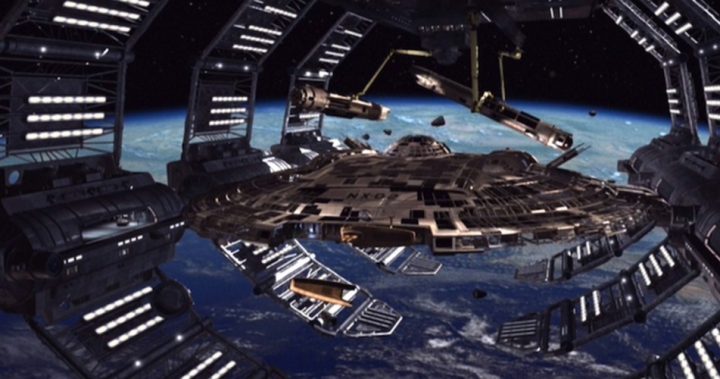
The days of terrestrially built spaceships propelled into space by rockets may become a thing of the past, as the founders of Made in Space aim to develop orbiting factories that will construct spaceships and satellites in space.
The key to making this ambitious project, which sounds like something out of Star Trek, into a reality, is 3-D printing technology.
According to Made in Space’s website, the advantage of “manufacturing and assembling structures in orbit, rather than on the planet’s surface,” is that they will be able to “unlock incredible design possibilities for extending the life of current on-orbit assets or entirely new structures.”
Further explaining that by “pulling fiber in microgravity, we address one of the most critical barriers to perfect ZBLAN on the surface — gravity-caused crystallization.”
ZBLAN are exotic types of glass made with heavy metal fluorides, used to make thin glass fibers. According to NASA research, “ZBLAN glass fibers are valuable for advanced communications, medical, and manufacturing technologies using lasers.”
Made in Space is developing what it calls the “Archinaut,” an orbital factory for constructing large space machinery, including fully-built and functional satellites and possibly even space vessels.
“Archinaut is a technology platform that enables autonomous manufacture and assembly of spacecraft systems on orbit,” Made in Space states on its website. The company further elaborates:
Archinaut enables a wide range of in-space manufacturing and assembly capabilities by combining space-proven robotic manipulation with additive manufacturing demonstrated on the International Space Station (ISS) and in terrestrial laboratories. Archinaut enables fundamentally new spacecraft designs and reduces the costs associated with qualifying a satellite for launch. The synergy of its manufacturing and assembly capabilities are critical to constructing entire spacecraft on orbit.
In other words, not only could Made in Space’s Archinaut drastically reduce the costs presently associated with launching satellites and other crafts into space, its ongoing efforts could revolutionize and pave the way for future generations of space vessels being built entirely in space.
According to a recent online article published by CNBC about Made in Space, “Ultimately, the company aims to use Archinaut to build entire spacecraft, space stations and habitats in orbit that can help people get to the Moon and Mars leapfrogging between structures along the way.”
CNBC recently enjoyed the opportunity to visit Made in Space’s headquarters at Moffett Field in Mountain View, California, in order to get a firsthand preview of the Archinaut. There, engineers were preparing the Archinaut’s 3-D printing technology for testing in a vacuum chamber.
Made in Space’s co-founder and chairman Aaron Kemmer told CNBC that they plan to launch the Archinaut into orbit and manufacture large-scale items such as trusses and reflectors for satellites within five years.
From a practical standpoint it makes sense that spaceships be built in space — the environment in which they are designed to operate. However the technology to do so has previously only been the subject of science fiction.
Captain Jonathan Archer’s starship Enterprise NX-01 and Captain Erika Hernandez’ starship Columbia NX-02 from the UPN 2001-2005 sci-fi television series Star Trek: Enterprise, were built in space in the show’s fictional universe set in the 22nd century. The starship Columbia NX-02 was even shown being constructed (see image above) from an orbital shipyard in Star Trek: Enterprise season two finale episode “The Expanse.”
In Paramount Pictures’ 2016 blockbuster film Star Trek: Beyond, set a century after the events depicted in Star Trek: Enterprise, Chief Engineer Scotty (Simon Pegg) explains to Captain Kirk (Chris Pine) that the USS Franklin NX-325, a contemporary starship to Archer’s Enterprise NX-01, was “built in space,” going on to say, “they are called starships for a reason.”
Could Make in Space be laying the “space frame” for the construction of future starships such as Captains Archer and Kirk’s USS Enterprise someday?
While we are still a long way from the fictional 22nd- and 23rd-century universe of Star Trek, Made in Space demonstrates the limitless ingenuity that can be achieved through the innovation of the free market. Watch out Elon Musk and SpaceX, the private space race may be getting a bit more competitive. Fortunately for Made in Space, there is plenty of room in space for such competive free enterprise.
Image of the fictional starship Columbia under construction at an orbital shipyard in space from the T.V. series Star Trek: Enterprise: CBS and Paramount Pictures




